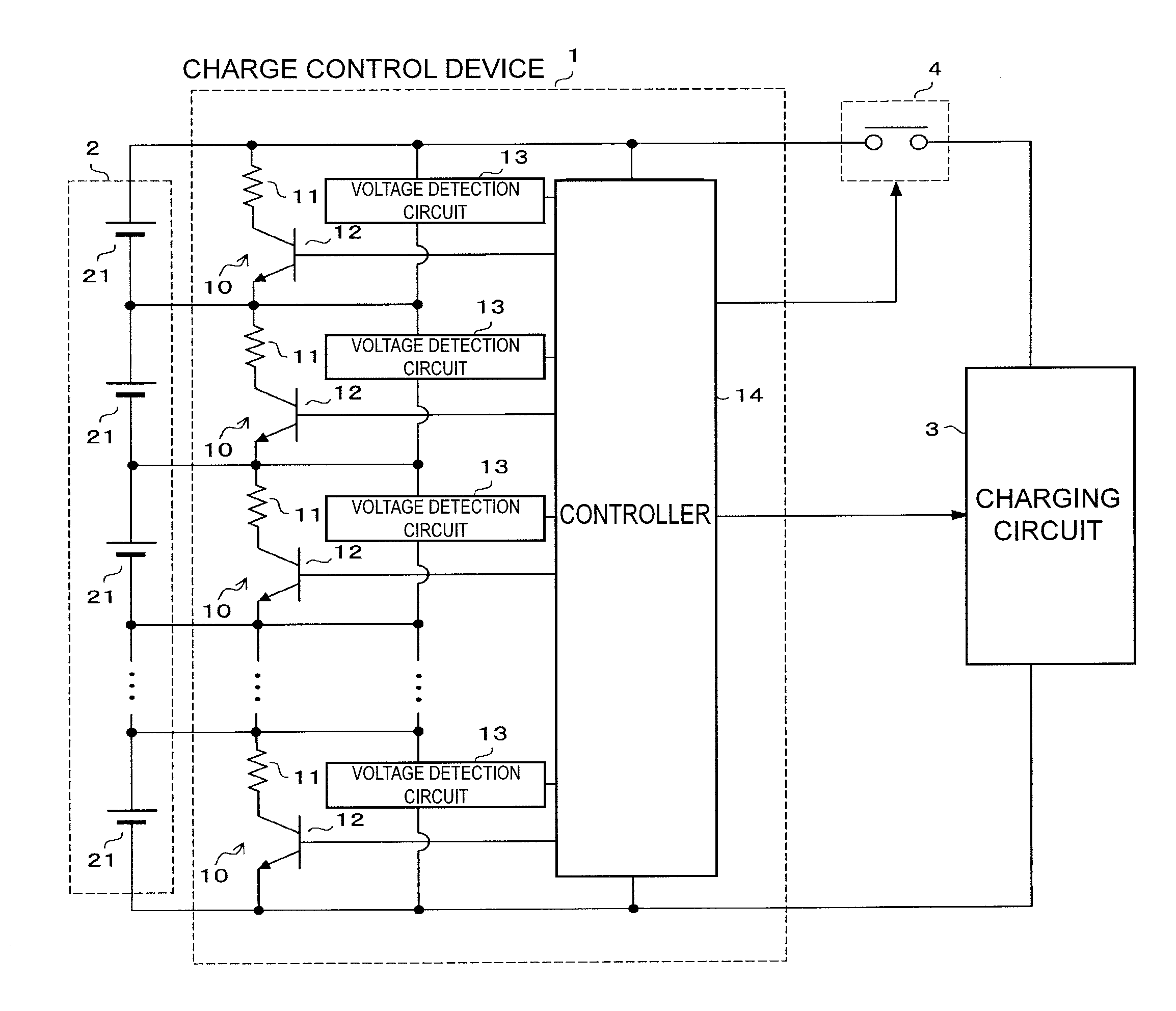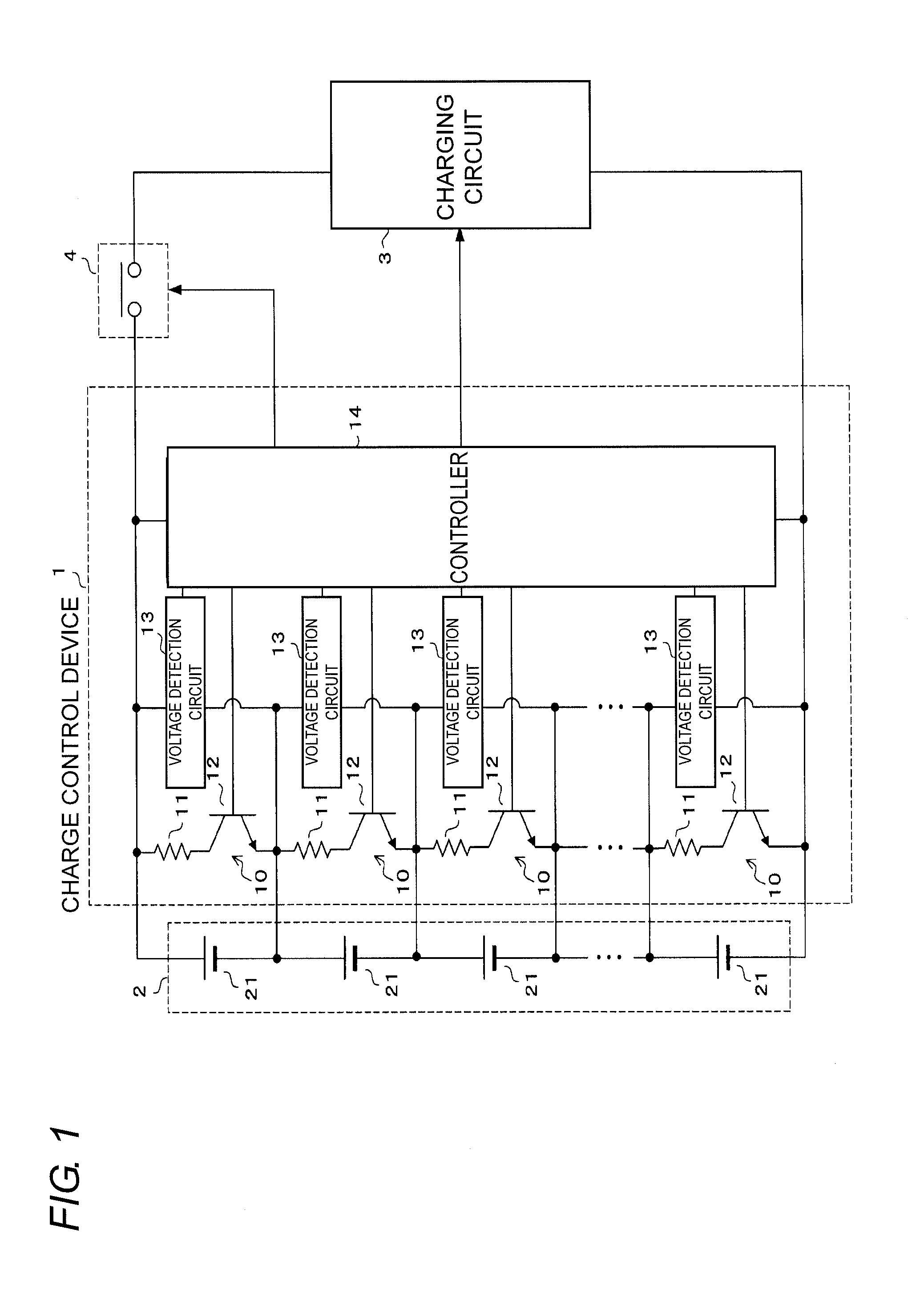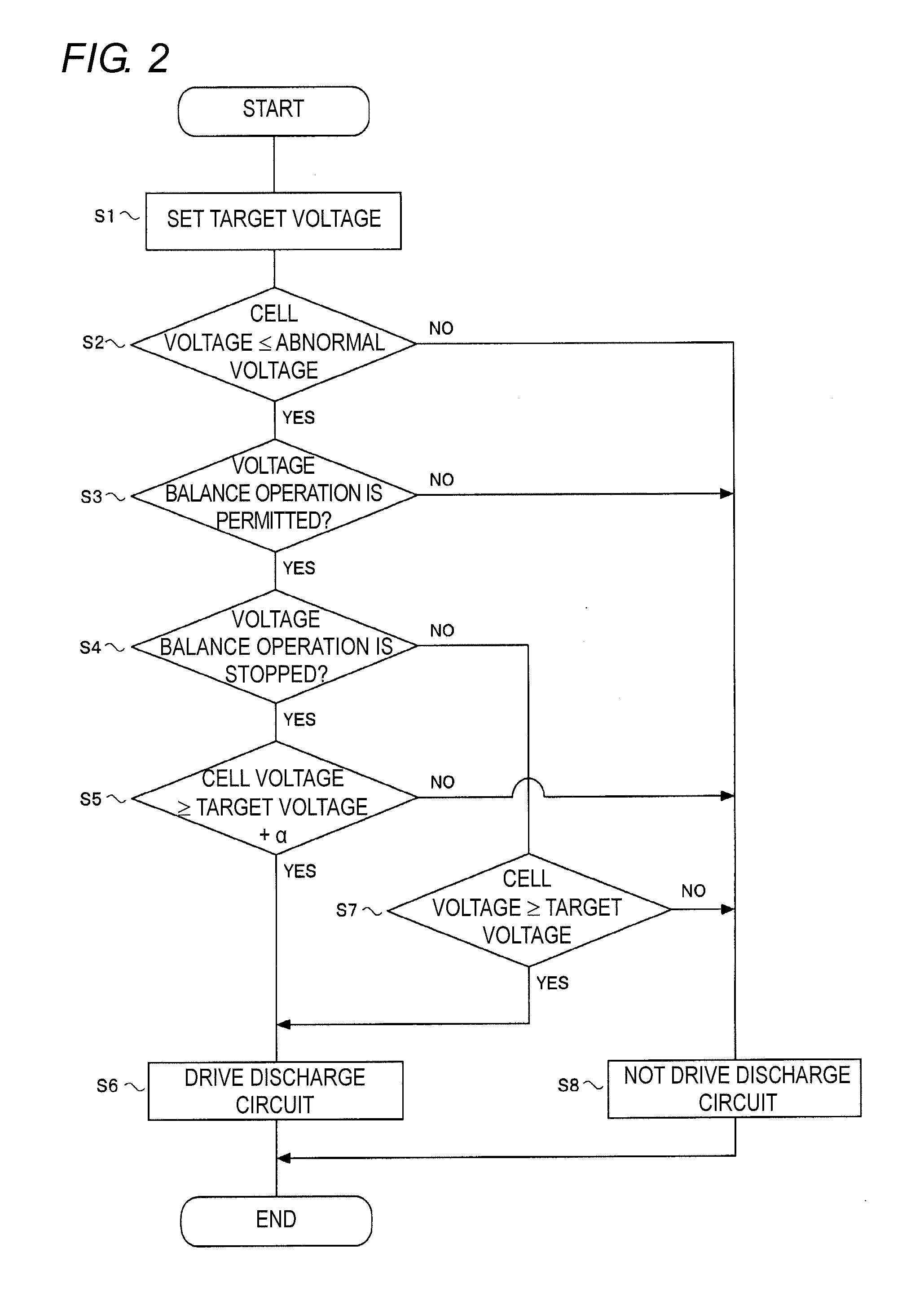Device and method for controlling charge of assembled battery
- Summary
- Abstract
- Description
- Claims
- Application Information
AI Technical Summary
Benefits of technology
Problems solved by technology
Method used
Image
Examples
Embodiment Construction
[0026]Hereinafter embodiments of the present invention will be described with reference to the drawings. The case that the invention is applied to an assembled battery mounted on an electric automobile is cited by way of example.
[0027]A configuration of a charge control device of the embodiment will be described with reference to FIG. 1. Referring to FIG. 1, a charge control device 1 is provided between an assembled battery 2 and a charging circuit 3 to control charge of the assembled battery 2. The assembled battery 2 includes a plurality of batteries 21 connected in series. For example, each battery 21 is a secondary battery, such as a lithium-ion battery. A contactor 4 is provided between the charge control device 1 and the charging circuit 3.
[0028]In the charge control device 1, each battery 21 of the assembled battery 2 includes a discharge circuit 10 that is constructed by a series circuit of a resistor 11 and a transistor 12 and a voltage detection circuit 13 that detects a v...
PUM
 Login to View More
Login to View More Abstract
Description
Claims
Application Information
 Login to View More
Login to View More - R&D
- Intellectual Property
- Life Sciences
- Materials
- Tech Scout
- Unparalleled Data Quality
- Higher Quality Content
- 60% Fewer Hallucinations
Browse by: Latest US Patents, China's latest patents, Technical Efficacy Thesaurus, Application Domain, Technology Topic, Popular Technical Reports.
© 2025 PatSnap. All rights reserved.Legal|Privacy policy|Modern Slavery Act Transparency Statement|Sitemap|About US| Contact US: help@patsnap.com



